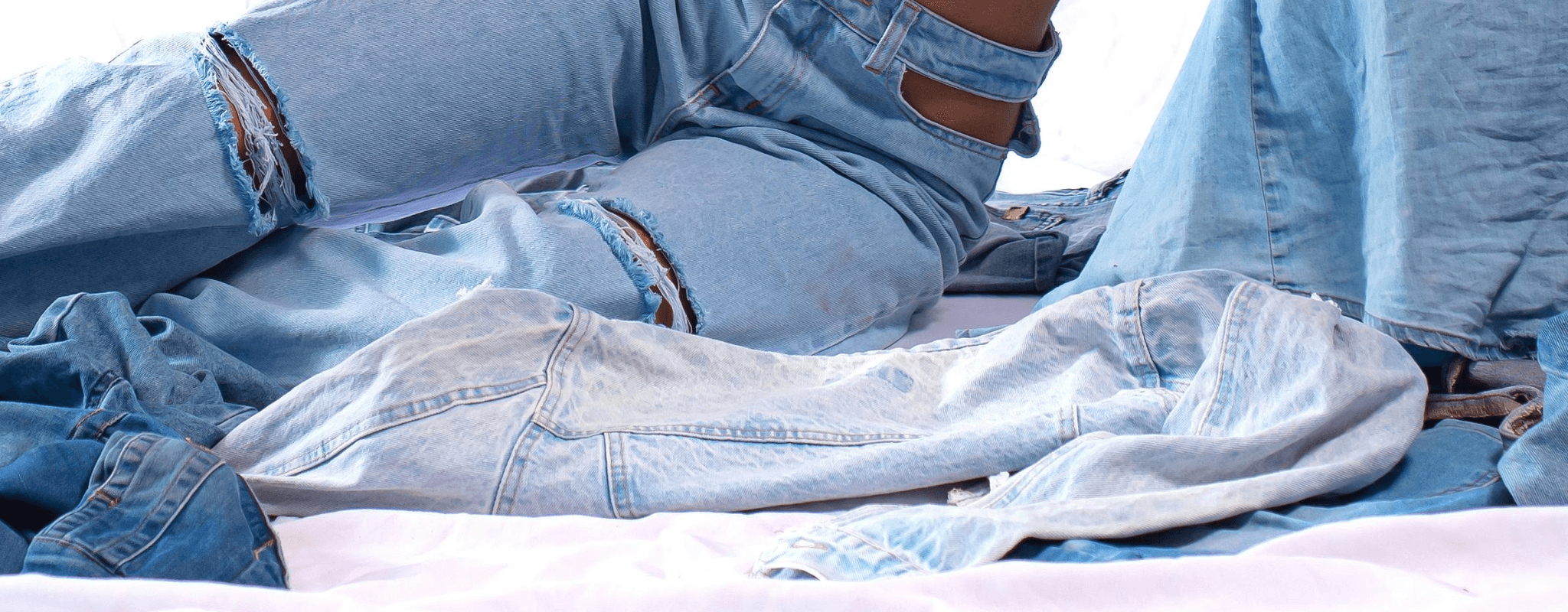Fast fashion is all about rapidly and cheaply churning out as much clothing as possible. But due to fleeting trends and ever-changing collections, only a fraction of this fashion frenzy actually gets sold. The rest ends up as what we call "deadstock." But what is deadstock exactly, and why is it such a big deal? At SANVT, we're breaking down the types of deadstock, how it happens, its environmental impact, and the social and economic consequences. Plus, we'll share how you, as a conscious consumer, can minimise deadstock and shrink your ecological footprint.
If you call yourself a slow fashion enthusiast, you’re well aware of the issue of discarded clothes and textile waste. We’ve all seen the shocking images of clothes piled higher than the dunes in Chile’s deserts. Yet, we often forget that textile waste isn’t just our old garments. It includes unsold merchandise and production scraps that never even make it to the store or our wardrobes. This untouched and unused waste is what we call deadstock.

The Birth of Deadstock
Deadstock refers to surplus goods that sit in warehouses because there’s no demand for them. This includes unsold items from last seasons that didn’t sell due to fast fashion’s rapid trend turnover, or production surpluses from poor forecasting or safety margins. Beyond clothes, shoes, and accessories, there's also fabric deadstock – unused materials left in textile factories because they weren’t needed for the planned products or were simply overproduced. But what are the real issues caused by deadstock?
Environmental Impact
The problems deadstock causes are extensive, especially when it comes to the environment. Deadstock leads to wasted resources in an industry already notorious for being wasteful and dirty. Extra raw materials are used in production without ever being utilised, and the emissions from manufacturing, transporting, and disposing of these goods only increase fashion’s overall carbon footprint. Many unsold items end up in landfills, taking hundreds of years to decompose. But deadstock is not only a problem in fast fashion. When it comes to luxury brands, there have been scandals involving the burning of unsold luxury items to maintain market value, reputation, and exclusivity. Unsurprisingly and unfortunately, the problems with deadstock in the fashion industry aren't just environmental.

Economic Blow to Brands
Deadstock also hits brands economically. Overproduction and faulty forecasting result in financial losses for brands and retailers. Plus, storing unsold inventory isn’t cheap. Often, deadstock is sold at steep discounts before being trashed, which can tarnish a brand’s image, making it look like a bargain basement. These low prices devalue fashion products, impacting ethical slow fashion brands that offer fairly priced garments. Consumers end up buying cheaply made fast fashion on sale, ignoring the high-quality, sustainable options from slow fashion brands. But what's the real cost of these bargains?
Social Consequences
Beyond economic repercussions for brands, deadstock has severe social impacts. After all, deadstock stems mostly from mass production, which is only cheap and fast if the working conditions are exploitative and unethical. To offset deadstock losses, most fast fashion giants rely on cheap labour and child labour in sweatshops. So, when we snag a t-shirt for 4€ from a fast fashion sale, someone else pays a high price.

Minimising Deadstock in the Fashion Industry
To avoid deadstock, wasteful production, and unethical labour conditions, brands need to improve demand forecasting. Advanced data analysis and AI could make this easier than ever. In an ideal world, the fashion industry should adopt sustainable practices, use biodegradable materials, and support circular economy initiatives. A popular option for many slow fashion brands is fashion on demand – meaning, producing clothes only when ordered. Although this requires more patience and costs a lot more, it produces the least textile waste and prevents deadstock for good. Lastly, another stylish and eco-friendly solution to reduce deadstock waste is upcycling. But it’s not only up to brands and policymakers; as consumers, we too play a crucial role.
What Can We Do as Consumers?
Demand drives supply, right? It’s our responsibility to ditch fast fashion giants and support slow fashion brands. Instead of buying cheap sale items, we should invest in quality garments that are sustainable and fairly produced. Even if a t-shirt costs ten times more, it’ll last ten times longer without someone else paying the price. Quality over quantity is key to preventing deadstock. Ultimately, the power to change this dynamic lies in our hands – or rather, our wallets.
SANVT’s Approach to Minimising Deadstock
At SANVT, we focus on premium essentials that are timeless, sustainable, and fairly produced. Our collection doesn’t change with the seasons or fleeting trends, avoiding deadstock of unsold items. Our products follow the motto: "True sustainability is quality that lasts a lifetime". By making high-quality essentials that last, we aim to reduce textile waste and promote sustainable consumption. We strive to keep our ecological footprint as minimal as possible and make a positive impact on people and the planet, as transparently documented in our Impact Report. We also make efforts to support a circular system within fashion which is why we use 24% post-consumer recycled cotton for our Perfect Jeans and 100% recycled (GRS certified) wool for our knitwear items, avoiding any textile waste.
Through our blog, we regularly inform about industry practices, new initiatives, innovative production methods, and sustainable materials, raising awareness about the consequences of our fashion consumption. Our goal is to enhance the appreciation of fashion and reduce consumption. Quality over quantity, always.
Deadstock: A Vicious Cycle
Deadstock is a vicious cycle. The more unsold items there are, the more pressure there is on brands to offer more trendy clothes, and the cheaper fast fashion brands try to produce, resulting in even more deadstock. To break this cycle, we need to support slow fashion brands with on-demand collections and sustainable brands with timeless collections at fair prices. Hopefully, our demand will gradually change the supply and make deadstock a thing of the past.


